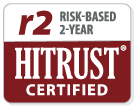by Elizabeth Morgenroth, RHIA, CPC, Curation Health Director of Outpatient CDI
In part three of our blog series focused on best practices for outpatient clinical documentation improvement, I would like to build upon my prior post which focused on three steps for creating a successful outpatient clinical documentation improvement (OCDI) program. More specifically, I will lean into specific areas of knowledge critical to the development and implementation of a successful OCDI program.
Population Health Leadership – Understanding of the Revenue Cycle
First, foundational knowledge of the revenue cycle workflow is of the utmost importance. Today, many health systems and physician practices task population health leadership teams with spearheading value-based care initiatives, including OCDI programs. Population health teams may not be as well-versed in revenue cycle best practices so it is critical that organizations ensure education and coaching are provided, if this is in fact the case. Reason being, a lack of revenue cycle knowledge can put a healthcare organization’s value-based care program at great risk.
Health system leadership should also prioritize involvement of key members of the revenue cycle team as stakeholders, all the way from patient access to patient billing and every step in-between. Today’s enterprise health information systems (EIS) with dynamic databases impact every operational and clinical area of a health system which requires breaking down operational silos Involving these stakeholders helps to do just that as well.
Today, many hospitals and health systems have also leveraged technology to address pain points earlier and earlier in revenue cycle workflows, thus taking a more proactive approach to optimize revenue and reduce accounts receivable. Operational activities that were once performed retrospectively [post- billing] may now be performed prospectively [pre-visit or pre-billing] in the revenue cycle in order to better align with risk-based contracts. In this way, emphasis can be placed on pre-visit revenue cycle operations in order to adopt value-based care best practices [prospective] instead of antiquated fee-for-service approaches [retrospective]. With these timely changes in the revenue cycle in mind, it’s important for organizations to ensure that their population health leadership teams understand the new, prospective approach to revenue cycle in alignment with adopting risk-sharing contracts in the context of existing revenue cycle operational activities.
CDI Leadership – Clinical and Coding Know-How
A second knowledge area key to building a first-rate OCDI program is ensuring clinical documentation improvement (CDI) staff have strong clinical and coding background and knowledge. While many CDI specialists have a nursing degree, not all do and clinical knowledge across this employee base can vary greatly depending upon prior education and training.
CDI staff closely partner with physicians in order to clarify clinical concepts in the patient record and ensure all critical patient details are front and center to facilitate appropriate care in the most effective and efficient manner. In addition, CDI review supports appropriate reimbursement based on the full value of patient care. A critical benefit of a best practices OCDI program is appropriate clinical validation of reported conditions. A lack of knowledge specific to clinical concepts can seriously divide coders and CDI professionals, making the necessary level of collaboration needed between these two parties challenging. An additional skill and finesse of the CDI professional is the ability to query physicians in an ethical manner, as well as to determine if and when it’s appropriate.
Finally, CDI professionals need to understand coding best practices. These professionals uniquely sit between physicians at the point of care and coders on the back end of care. A lack of clinical or coding knowledge by a CDI professional can impact how a physician assesses and treats a patient, as well as how that physician fully communicates thought processes which lead to decisions that impact patient care. That clinical documentation can profoundly impact an organization’s bottom-line in a positive or negative way. At the end of the day, the job of the CDI professional in our emerging value-based care world is to ensure that physician documentation is clear, concise, complete, and consistent enough to ensure high-quality patient care and back-end coding of that care.
By ensuring population health experts have a strong understanding of revenue cycle, including revenue cycle stakeholders in VBC initiatives, and CDI professionals have mastered both clinical and coding best practices at-large, physicians definitely win. The goal is to ensure these skill sets are in place to remove administrative burden from physicians and prioritize patient care. Excellent patient care is supported by excellent documentation. The incidental end result is clean claims with minimal delays in accounts receivable. This, in turn, is mission-critical to a strong value-based care strategy – and a strong, supporting OCDI program.
Read the first in our blog series – Profiles in Healthcare: Why Wait – Creating A Sense of Urgency for Holistic CDI – Curation Health (curationhealthcare.com)

